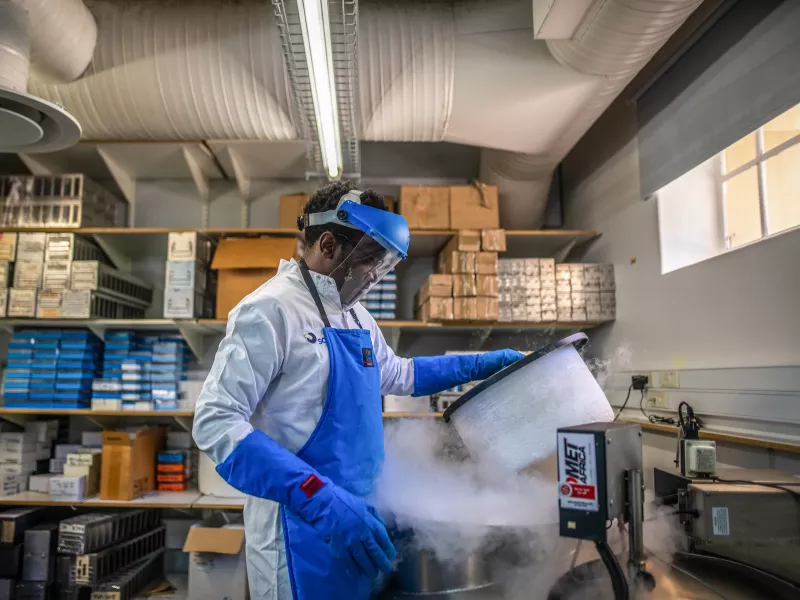Although it may seem like a disease of the past in developed nations, tuberculosis still kills more people worldwide than any other infectious disease except COVID, with about 1 point 6 million people dying from it each year. The only vaccine that has been approved, developed more than a century ago, only offers a dependable level of protection when administered to children.Now, researchers at the University of Cape Town in South Africa have made significant progress toward developing an mRNA TB vaccine that may be effective for individuals of all ages. The unusual set of blood samples that were preserved in deep freeze for almost two decades served as the foundation for their discovery, which was made possible by new technology. Starting in 2005, samples were taken from about 6,000 high school students in South Africa. Additionally, they were created with the intention of being used for a number of other TB studies. However, Musvosvi claims that the scientists quickly discovered that the cells held some uncommon hints regarding how the human immune system can eradicate the bacterium. This is due to the fact that follow-up samples were repeatedly collected over a two-year period, as well as one of the peculiarities of TB: the bacterium that causes the disease is so widespread that more than 80% of South Africans have been exposed to it. However, only about one in ten of these individuals actually develop the disease, frequently months or even years after exposure.

To explain, one of the researchers behind the effort, Munyaradzi Musvosvi, ushers me into a room with several enormous metal vats. "These are our cryotanks," he says. "The cells are kept here in liquid nitrogen." He pulls the lid off one of the tanks and plumes of white vapor spill out. "It's kind of hazy," he says, pointing deep inside. "But you just might be able to see a little box there." This meant that when the researchers analyzed the first round of blood samples they could identify a subset who had immune cells indicating that they had been exposed to TB but had not gotten sick. Then, says Musvosvi, "as we follow them up, we could document that some of these adolescents were [subsequently] diagnosed with active TB disease.
" They had symptoms and we could actually measure the bacteria in the sputum that they were coughing up." In other words, says Musvosvi, the researchers could set up a comparison. "It allowed us to ask the question: Of those adolescents who progressed to disease during this two-year period, what was different between them and those who managed to control infection during the two year follow-up?" Specifically, he and his collaborators wondered: Did the exposed students who never got sick have a different set of immune cells. And, if so, were those immune cells – they're called T-cells – latching on to different, presumably more vulnerable, parts of the TB bacteria? As Musvosvi puts it, "Out of all the proteins that TB makes, what do these T-cells recognize?"




